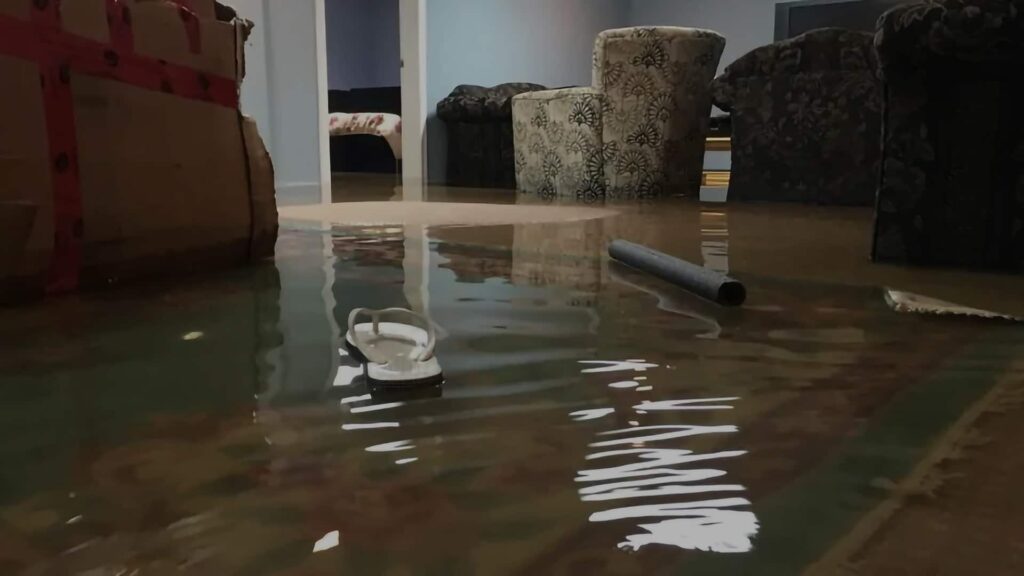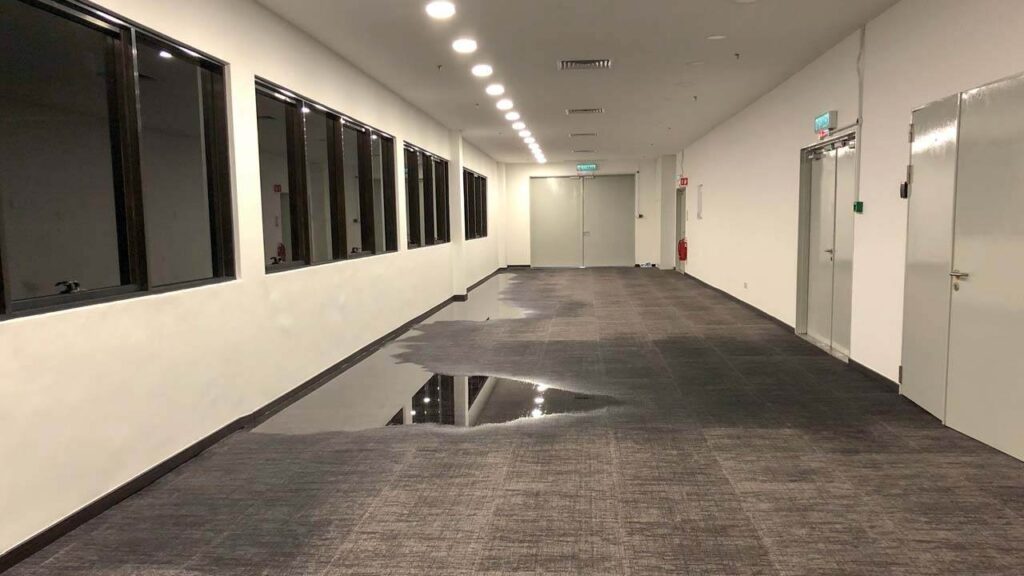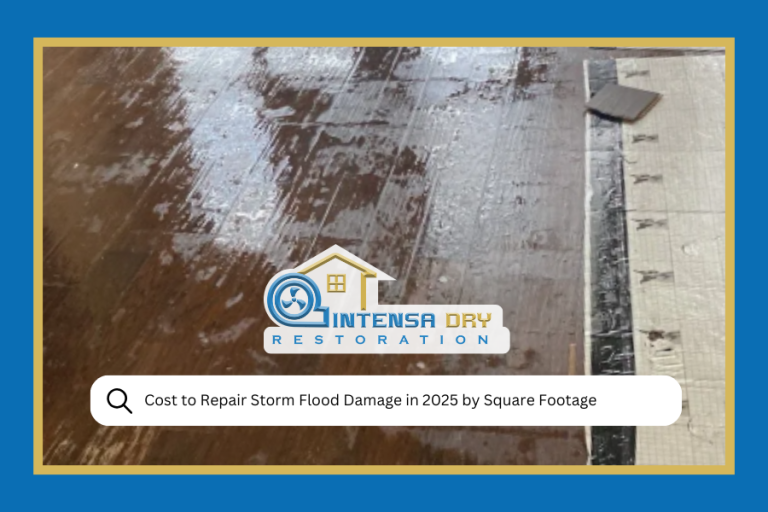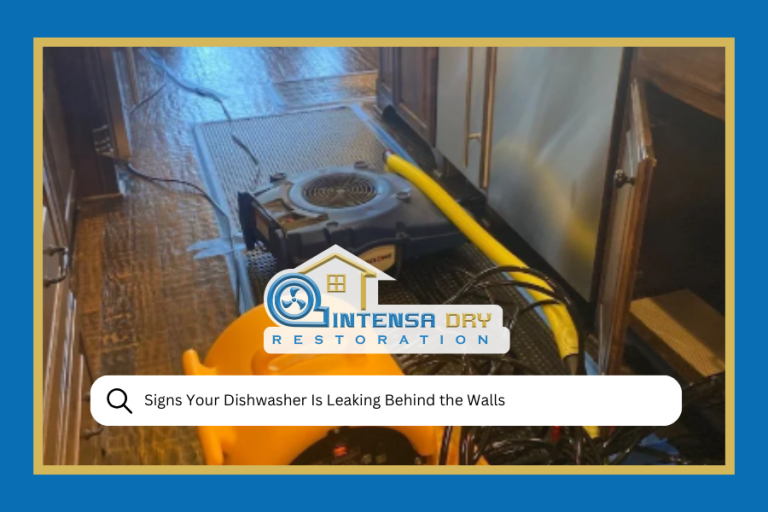Detecting hidden water damage in your Plano home is crucial to prevent structural issues and mold growth. Often, water damage isn’t immediately visible, making it essential to be proactive in identifying potential issues. From subtle stains on walls and ceilings to musty odors and warped flooring, the signs can be elusive. In this guide by Instensa Dry, we’ll explore key indicators and techniques to uncover hidden water damage, helping you safeguard your home and address issues before they escalate. Stay vigilant and learn how to spot these subtle clues, ensuring the long-term health and integrity of your Plano residence.

Inspecting Walls and Ceilings
When inspecting walls and ceilings for hidden water damage, focus on any discoloration, peeling paint, or soft spots. Stains, even if faint, may indicate leaks from pipes or the roof. Run your hands along surfaces, feeling for unusual textures or dampness. Check for bulging or sagging areas, as these could be signs of water accumulation. Use a flashlight to closely examine corners and edges where water might seep through. If you notice any unusual changes in color or texture, it’s essential to investigate further. Early detection during these inspections can prevent extensive damage, ensuring the structural integrity of your Plano home.
Examining Flooring for Warping or Buckling
When examining your Plano home for hidden water damage, pay close attention to the flooring for signs of warping or buckling. Water can seep into the subfloor, causing materials like wood or laminate to distort. Run your hands over the surface, feeling for unevenness or raised areas. If the flooring feels soft or gives under pressure, it may indicate water damage. Discoloration or an off-putting odor can also be red flags. Timely identification of warped or buckled flooring is crucial, as addressing the issue promptly can prevent further damage and the potential growth of mold beneath the surface.
Checking for Musty Odors
Checking for musty odors is a vital step in identifying hidden water damage in your Plano home. Musty or moldy smells often indicate the presence of moisture and potential mold growth. Conduct a thorough olfactory inspection in different areas, especially those prone to dampness. Pay attention to basements, crawl spaces, and areas near plumbing fixtures. If you detect a musty odor, investigate further to pinpoint the source of water intrusion. Addressing hidden moisture promptly can prevent extensive damage and health hazards associated with mold. Regularly checking for these odors is an essential proactive measure to maintain a healthy and water-damage-free home environment.
Investigating Discoloration and Stains
Investigating discoloration and stains is crucial in uncovering hidden water damage within your Plano home. Discolored patches on walls, ceilings, or surfaces often indicate moisture infiltration. Yellowish or brown stains may suggest leaks from pipes, roofs, or windows, while green or black spots can be indicative of mold growth. Carefully inspect these areas, noting any changes in color or texture. Stains that appear and reappear after cleaning may signal an ongoing water issue. Addressing these discolorations promptly can prevent structural damage and mold infestation, safeguarding the overall integrity and aesthetics of your home in Plano. Regular inspections are key to early detection and mitigation.
Assessing the Integrity of Baseboards and Trim
Assessing the integrity of baseboards and trim is a valuable aspect of uncovering hidden water damage in your Plano home. Inspect these architectural features for any signs of water-related issues, such as warping, swelling, or discoloration. Soft or spongy textures may indicate moisture absorption, suggesting an underlying problem. Peeling paint or visible mold growth along the baseboards is also cause for concern. Run your hands along these surfaces, feeling for irregularities. Any deviations from the norm may signify water damage requiring investigation. A meticulous examination of baseboards and trim enhances your ability to detect and address potential issues early, preserving your home’s structural integrity.
Examining the Attic for Leaks
Examining the attic for leaks is a crucial step in identifying potential hidden water damage in your Plano home. Start by inspecting the roof for missing or damaged shingles that may allow water infiltration. Inside the attic, look for water stains on the rafters, insulation, or any visible surfaces. Pay attention to the presence of mold or mildew, as these can indicate persistent moisture. Check for damp insulation, as it may lose its effectiveness when exposed to water. Regularly monitoring the attic for signs of leaks helps you address issues promptly, preventing extensive damage to your home’s structure and ensuring a watertight living space.
Inspecting Windows and Doors for Seal Integrity
Inspecting windows and doors for seal integrity is crucial for identifying potential hidden water damage in your Plano home. Check for gaps, cracks, or deteriorated caulking around windows and doors, as these openings can allow water infiltration. Peeling paint or warped wood near these openings may also indicate moisture-related issues. Run your hand along the edges to feel for any drafts or cool air, which could signify compromised seals. Addressing seal issues promptly prevents water from entering your home, safeguarding against damage to walls, floors, and surrounding structures. Regular inspections help maintain the efficiency of your home’s seals, ensuring a secure and watertight environment.
Surveying the Roof for Damaged Shingles
Surveying the roof for damaged shingles is a crucial aspect of identifying potential hidden water damage in your Plano home. Inspect the roof regularly for missing, cracked, or curled shingles, as these can create entry points for water. Check for any debris accumulation, as it may trap moisture and accelerate shingle deterioration. Pay attention to discolored or stained areas, as they may indicate water penetration. Timely repairs or replacements of damaged shingles are essential to maintaining the roof’s integrity and preventing water-related issues such as leaks and structural damage. A vigilant approach to roof maintenance ensures the longevity of your home’s protective covering.
Analyzing the Basement and Crawl Spaces
Analyzing the basement and crawl spaces is vital in uncovering hidden water damage within your Plano home. Inspect these areas for signs of dampness, standing water, or mold growth. Check the foundation walls and floor for cracks or discoloration, as these may indicate water intrusion. Examine support beams and joists for any signs of water damage or rot. Use a flashlight to illuminate dark corners and identify potential issues. Proper ventilation and waterproofing measures are essential for preventing water-related problems in these spaces. Regularly analyzing the basement and crawl spaces ensures early detection and mitigation, preserving the structural integrity of your Plano home.
Professional Help
Seeking professional help is paramount when dealing with hidden water damage in your Plano home. Certified water damage restoration experts possess the knowledge and tools to conduct thorough assessments, identifying the extent of the damage. Professionals use advanced techniques like infrared cameras and moisture meters to locate hidden issues within walls, ceilings, and floors. Their expertise ensures a comprehensive understanding of the situation, enabling precise and effective remediation. Prompt intervention by professionals can mitigate further damage, prevent mold growth, and restore your home to a safe and habitable condition. When faced with hidden water damage, entrusting the task to skilled professionals ensures a thorough and lasting solution.
Conclusion
In conclusion, proactively identifying and addressing hidden water damage in your Plano home is crucial for preserving its structural integrity and ensuring a healthy living environment. Regular inspections of walls, ceilings, flooring, and other vulnerable areas can unveil subtle signs of water infiltration. Prompt action, whether through DIY measures or professional assistance, is essential to mitigate damage and prevent the growth of mold. By examining key areas, such as the attic, windows, doors, and roof, and seeking professional help when needed, you can safeguard your home from the detrimental effects of hidden water damage. Vigilance and timely intervention are the cornerstones of maintaining a secure and resilient living space.





